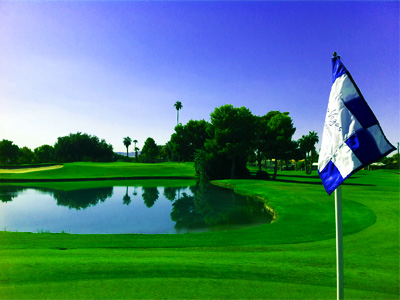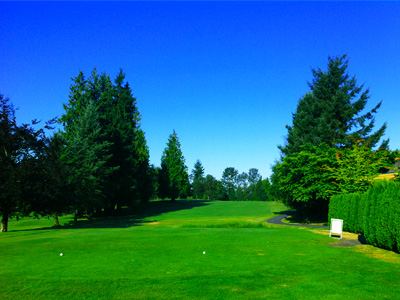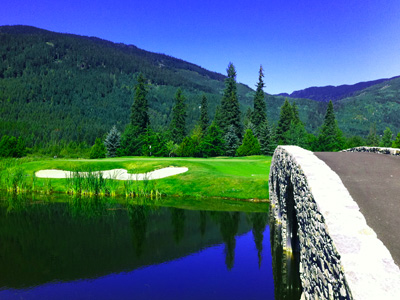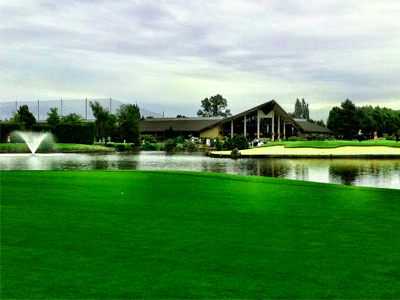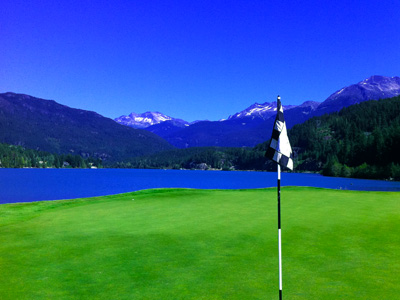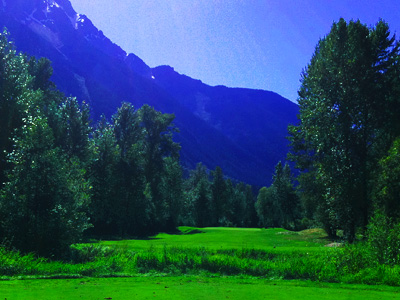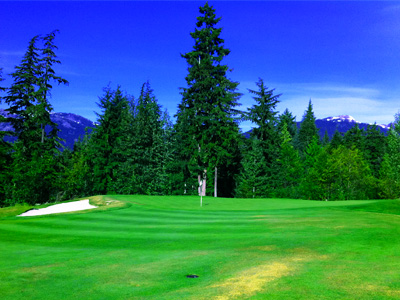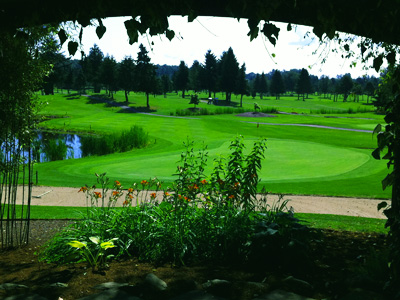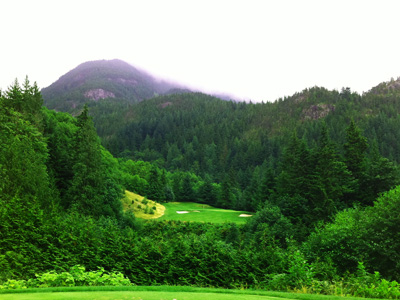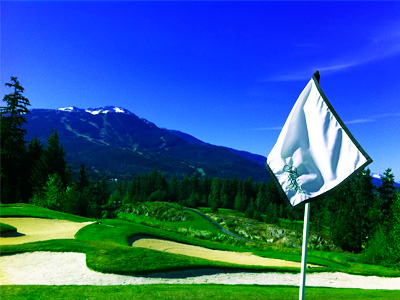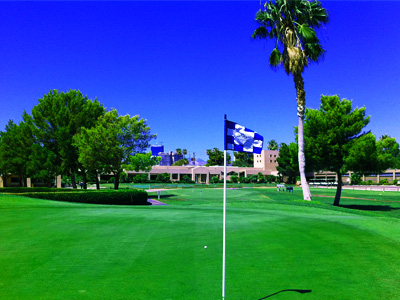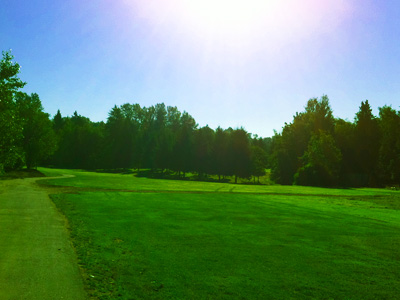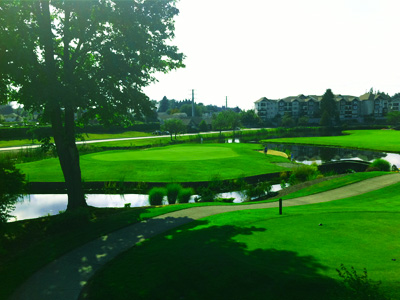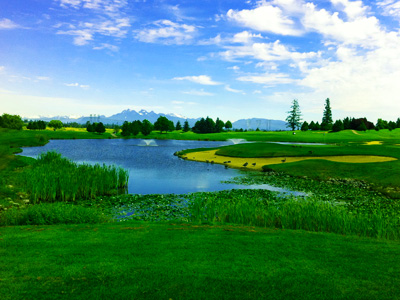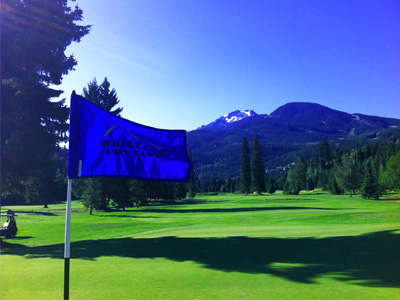Kettle moraine! The two words you’ll hear most this week at the U.S. Open at Erin Hills, aside from “Dustin Johnson,” “Will Phil make it?” and assorted curses from pros. What is “kettle moraine,” you ask? We’ve got your answer to that right here, along with 17 other facts you need to know heading into the U.S. Open. To the first tee!
1. Can Dustin Johnson go ahead and make space for the trophy?
Let’s see. Erin Hills is a course that rewards power and firm putts. The U.S. Open is a tournament that demands mental stability and benefits experience, such as that held by a defending champion. You might as well put “Property of DJ” on the clubhouse front door. He’s the odds-on favorite to win this, and with good reason. It’s not quite Golden State-vs.-everybody, but close.
2. How about Jon Rahm, everybody’s Next Big Thing?
Rahm has all the tools necessary to become one of golf’s greats, including a power game that’s already among the world’s best. But he’s 22 years old, he missed the cut earlier this month at the Memorial, and he’s shown a bit of a temper at times; all three of those factors combine for a red flag the size of a football field. The U.S. Open demands age and guile as much as power and touch, and Rahm most likely needs a bit of seasoning to contend. (Of course this means he’ll win.)
3. So are non-power-hitters out of the mix here?
Not at all. For reasons we’ll get into later, power isn’t always a cheat code at Erin Hills. Guys with the ability to roll the ball on approaches to the green, as opposed to simply targeting the hole and throwing darts, will have an advantage, and players like Charl Schwartzel, Kevin Kisner, and Masters runner-up Justin Rose fit right into that category.
4. Back to the kettle moraine. What’s the deal?
A long, long time ago — like 10,000 years, longer even than when Arnold Palmer’s Army roamed the Earth — a glacier covered the part of Wisconsin that’s now hosting the U.S. Open. As it receded, it left behind debris (known as moraine) and gouged holes in the earth (these would be the kettles). The result is a broad, rolling, open plain that is just ideal for a golf course — indeed, the course designers could’ve shaped Erin Hills with a teaspoon.
5. What’s the history of Erin Hills?
Erin Hills as a course dates back only a decade or so; before then, it was a cattle pasture. An exceptional multi-part series in the Milwaukee Journal-Sentinel detailed the course’s route from farm to championship, and it’s an astonishing story, one that includes ambition, bankruptcy, wheeling-dealing and murder. (Really.) The site won the 2017 U.S. Open in 2010, a surprise underdog amid a roster of thoroughbred courses. It’s now, depending on setup, one of the longest and largest courses on the Open rotation.
6. What’s the weather supposed to be?
Highly unpredictable. Forecasts for the weekend show a 60 percent chance of rain Friday and an 80 percent chance of rain on Saturday, so we’re looking at the possibility of trios playing and TV broadcasters vamping. Regardless, the wind will be a key factor, and that means the winning score could be five-under or five-over, nobody knows for sure.
7. Weather could be a factor? So does that mean Phil could play?
Ehhhh … maybe? Phil Mickelson, of course, will likely miss the U.S. Open because his daughter’s graduation is scheduled for about two hours before his tee time, two time zones away. The USGA did all it possibly could to give Phil a chance at playing, setting a late tee time, but only a weather delay will save Phil now. (Someone at the school couldn’t have looked at a calendar back in February?) The Phil Challenge will be a fun sidelight on Thursday, but barring a downpour — not out of the question — he’ll have to wait until next year to try to complete that Grand Slam.
8. What’s the trickiest aspect of Erin Hills?
Blind spots. Fourteen of the course’s 18 holes have at least one angle that blocks a view of the flagstick. It’ll require trust in both your skills and your caddy. “Rory McIlroy said that a shot is only blind for you once, and on the tee, that’s true,” USGA historian Mike Trostel said. “But here you have shots that are blind from various spots on the course. You’re not going to know exactly how to play them until you’re on them.”
9. What’s up with the rough?
The USGA loves to make the rough at the U.S. Open so difficult that it’s just this side of molten lava. At Erin Hills, the fescue grew to waist-height in some locales; after protests from players, the USGA mowed some of it down to a more manageable level, meaning no caddies will get lost in the tall grass. But, bottom line, the fairways are some of the widest in the history of the U.S. Open; if you end up in the rough, you’ve either gotten a raw deal from the wind, or you flat-out deserve to end up in the nasty stuff.
10. How about the bunkers?
Brutal. Fearsome. Round-killing. The bunkers at Erin Hills are tight and swooping; every ball that lands in one will almost surely end up in an awkward lie. Fairway bunkers will often require a punch-out, and greenside bunkers will be devastating. Take, for instance, the par-3 ninth: it’s pretty much encircled by bunkers, each of which can turn a birdie into a double bogey in a hurry.
11. What will the closing holes mean for the tournament?
Erin Hills has a closing-hole setup that’s ideal for Sunday afternoon drama. The 16th is a par-3 that will require a bit of dexterity to avoid rolling into a bunker. The par-4 17th is the only hole on the course without bunkers. And then comes the beast: the par-5 18th, which can play as long as 663 yards. There will be opportunities to go low, way low, if you have the guts to break out the big sticks.
12. What’s par at this course?
The USGA has set par at 72 for the course, the first time par has been set that high in 25 years. And given how much the USGA loves enforcing par, you’ve got to wonder why. The USGA isn’t giving those two strokes to the field, eight strokes on the week, out of generosity; the course will take its pound of flesh in return. The USGA has the opportunity to set tee boxes at varying lengths, depending on conditions — the 18th hole has four possible tee locations — and the length of the par-5s can range from “reachable in two” to “lucky to get there in three.”
13. How many trees are there on the course?
Five. Not five hundred, five. (And I’d probably still hit all of them if I were playing.) This sure sounds very links-course-like, but the USGA wants you to know that this is a “heartland” course, not some Euro-knockoff.
14. In advance of Friday afternoon: what’s the cut?
The cut of the 156-player field is the top 60 and ties. And, to answer the next-most-asked question, if there’s a tie at the end of regulation, an 18-hole playoff will tee off at noon ET on Monday.
15. When can I watch this thing?
Best thing about majors? They’re like the NCAA tournament; you can tap out of work early and watch sports. Thursday and Friday, the tournament’s on FS1 from 10 a.m. to 5 p.m. ET, and then on Fox from 5 p.m. to 8 p.m. On the weekend, Fox handles broadcast duties from 10 a.m. till around 7 p.m. Online, usopen.com runs all day, every day, with featured groups and holes.
16. Why’s this particular tournament so critical to the USGA?
The tournament’s organizer is flailing right now, suffering from self-inflicted wounds at both the men’s and women’s Opens last year. Rules controversies that struck viewers as beyond nitpicky tarnished both events, and those came atop half a dozen other debatable decisions over the last decade. Nobody’s particularly happy with the USGA right now … but it’s worth noting that nobody’s skipping the U.S. Open in protest, either. The USGA would be best served with a competitive yet unremarkable — from a rules perspective — tournament that ended with a feel-good winner. (Fly faster, Phil!)
17. When will the Open come back to Wisconsin?
Getting ahead of ourselves, aren’t we? The USGA is set for the next decade, with the 2027 Open the first available. (That’s right: add 10 to your current age, and that’s where you’ll be the first time the Open could come back to Erin Hills. You’re gonna be old.) Erin Hills has plenty of factors in its favor — wide-open fairways, challenging layout, Midwest location — but as Trostel notes, “we want to make sure the players approve. That’s the most important thing, to get the players on board.” So pay attention to what the players say coming off the course; that could determine how soon we’ll be back this way.
18. Oh, wait, one more: what’s up with Tig-
That’ll do it, everyone! Enjoy the tournament!
____
Jay Busbee is a writer for Yahoo Sports and the author of EARNHARDT NATION, on sale now at Amazon or wherever books are sold. Contact him at jay.busbee@yahoo.com or find him on Twitter or on Facebook.
More from Yahoo Sports:
• Umpire drops F-bomb on Nats star after being asked to move
• Pro Bowler stunned by Seahawks’ Kaepernick decision
• Yasiel Puig flips off Cleveland fans after homer
• LeBron’s stunning answer about NBA ‘super-teams’
Other Related Posts:
Tiger Woods will get a final tuneup in before the Masters after all. Almos...
Maybe Phil Mickelson's decision to cut his family vacation to Italy short f...
Jordan Spieth kicked off his 2016 with a dominant, eight-shot win at the H...
Lydia Ko and David Leadbetter have parted ways. (Getty Images) The changes ...
Adam Scott is enjoying a good start to his 2017. (Getty Images) Adam Scott ...
